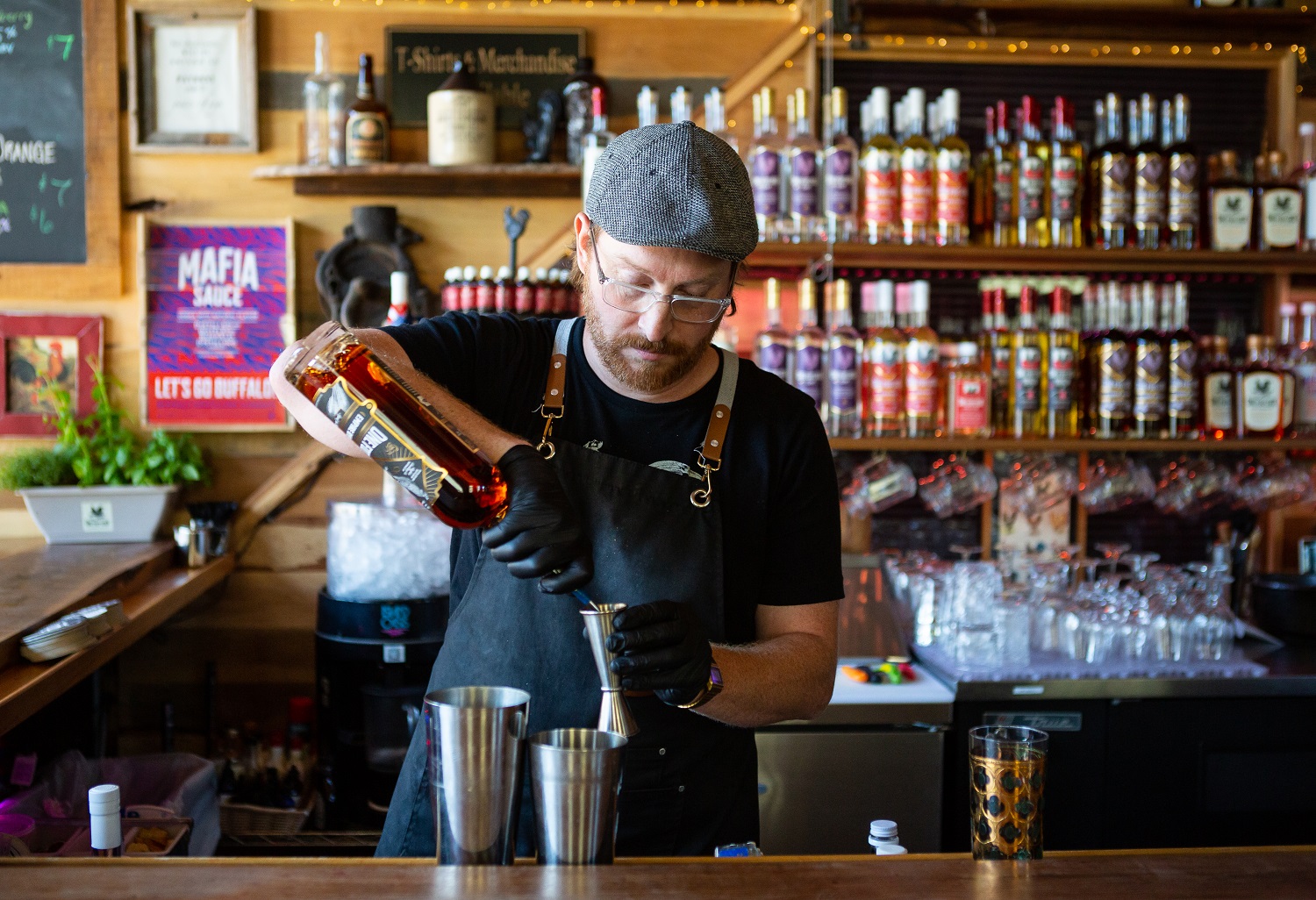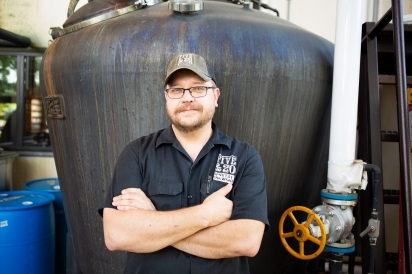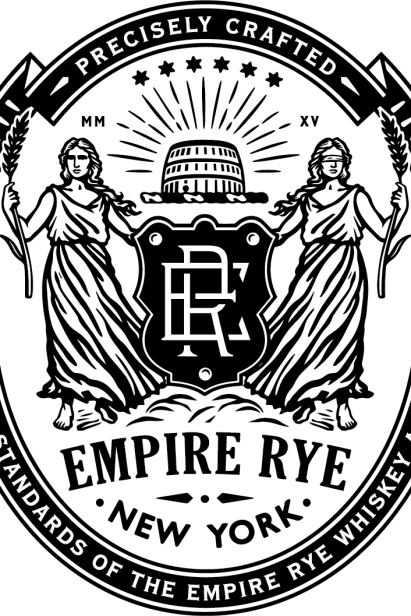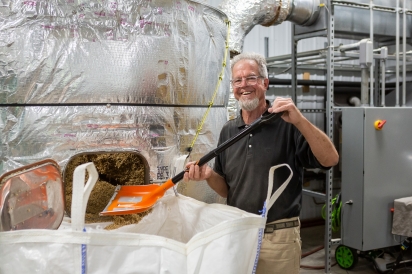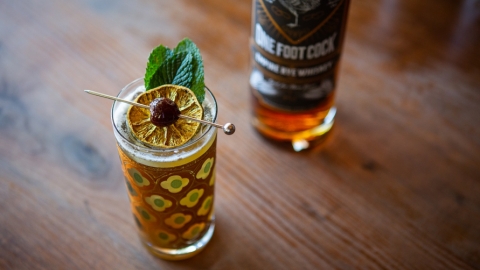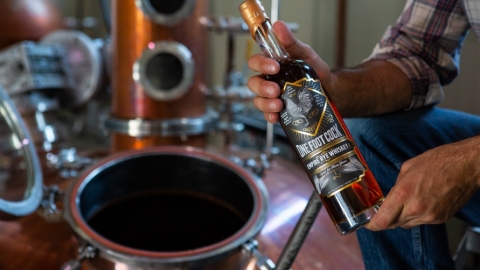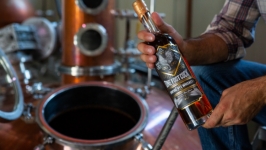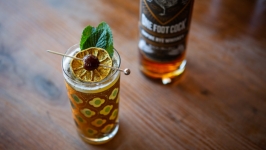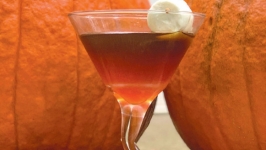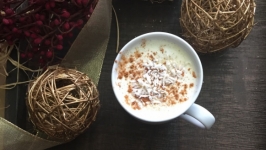Empire Rye
As a relatively new convert to whiskey, perhaps the result of experimenting with cocktails at home during quarantine, I recently sipped my first rye whiskey ever at Buffalo Distilling Company, which is housed in a historic brick carriage house in Buffalo’s Larkinville District. During our tasting, Frank Weber (one of three owners) shared that we were tasting an Empire Rye, a designation I was unfamiliar with. I was curious to know more about this New York spirit.
Rye is often described as spicy and distinctive—although each rye has its own unique flavors and each drinker will experience them differently. But generally, rye has a signature note that is a bit bolder and more assertive than a bourbon.
The history of rye in North America predates the U.S., as I learned from Joe Nelson, head distiller at Five & 20 Spirits in Westfield, NY. The hardy grain thrived in the rocky soils and climate of what is now Western NY and Western PA, and colonial farmers grew more than they could use. With the excess they made whiskey—a shelf-stable, easily transportable and marketable product. Sales of the popular rye whiskey helped to keep their farms viable.
Following the Revolutionary War, the fledgling U.S. government decided to levy a new tax (the Federal Excise Tax) on whiskey, and spirits production in general, to cover the significant debt left from the war. This eventually led to an uprising of small farmers and distillers near Pittsburgh, which came to be known as the Whiskey Rebellion.
Failing to defeat the tax, farmers decided they would go to where the tax man wasn’t, and at that time Kentucky and Tennessee were the frontier. There the climate and geology were much better suited for corn, so distillers switched to a predominantly corn spirit, or bourbon. As Nelson suggests, you might say that tax-dodging Western PA and Western NY farmers and whiskey producers birthed the bourbon industry.
Though rye was once the dominant spirit on the East Coast, Prohibition interrupted consumption and, as other spirits gained in popularity, the demand for NY rye never fully recovered.
Over the last decade, however, rye has experienced a resurgence as craft distillers have embraced it for its unique flavors. In 2015, six New York distillers came together to pay homage to the state’s rye history, establish a distinctive whiskey style that would rival the best in the world, recognize the quality already being made in the state and revive the lost tradition of producing the spirit in New York. The Empire Rye Whiskey Association was established, and with it, a set of standards that a producer must meet in order to label their whiskey “Empire Rye.”
In the U.S., a rye whiskey must be made from a grain mixture that is at least 51 percent rye, aged in new charred-oak barrels, distilled to no more than 160 proof, entered into the barrel for aging at a proof no higher than 125, and bottled at no less than 80 proof. To be considered an Empire Rye, it must meet further standards, according to the Empire Rye Whiskey Association, including the NY Farm Distiller (Class D) requirement that 75 percent of the mash bill be NY rye grain, which may be raw, malted or a combination. (The mash bill is the combination of grains in the distiller’s recipe.) The remaining 25 percent may be composed of any raw or malted grain, NY-grown or otherwise, or any combination thereof. Additionally, it must be aged for a minimum of two years at not more than 115 proof at time of entry, and it must be mashed, fermented, distilled, barreled and aged at a single NY distillery.
The higher percentage of rye creates a more distinctive flavor and the lower barrel proof entry makes for a different (and, many believe, more flavorful) whiskey, and therefore differentiates an Empire Rye. While these standards help to define an Empire Rye, they still allow distillers to create their own unique expressions.
The rye whiskey I tasted at Buffalo Distilling is Buffalo’s first and only rye since Prohibition, and Buffalo’s first Empire Rye. It uses NY rye, NY malted rye and NY native corn, plus new charred white American oak barrels from the Adirondacks, and it is barreled at 115 proof.
“Rye is a really distinctive NY product that I think is world class,” says Weber. “Part of what really makes it great is that we use malted rye in part of the process, and we happen to have a world-class maltster in Niagara County: Bob Johnson.”
Johnson, a retired biology professor and hop farmer turned maltster at Niagara Malt, provides sustainably produced specialty grains and malts for craft brewers and distillers.
Malted rye has been germinated by soaking it in water. Germination develops enzymes that break down the starch into sugars, which are necessary to produce alcohol. The growth is then stopped by drying the grain down quickly. Malting can enhance the flavor of the grain. Johnson gets his organic rye from Oechsner Farms in the Finger Lakes. He malts each grain (rye, barley, etc.) for the character of that grain, as well as how it will be used later. The result is popular with many distillers and brewers.
Johnson is equally complimentary to Buffalo Distilling and is a big fan of rye. “As it has aged, Buffalo Distilling’s Empire Rye has really become rounded—it’s mellowed nicely. You get vanilla and interesting spice flavors; caramel comes out of it, and it’s like a spicy bourbon. It really, really is good.” Buffalo Distilling’s first batch sold out, but its next Empire Rye, aged four years and bottled in bond, will be released in October 2022 as part of its 10th anniversary.
Johnson believes Empire Rye is an important designation. “Rye is coming back into favor because it’s a nice whiskey with a level of spiciness you don’t get from other types of spirits. It’s the perfect Manhattan maker: It holds its own against sweet vermouth and it’s become my favorite mixed drink.” He’s looking forward to more distillers releasing Empire Rye. “It’s being made by people darn serious about distilling, and I believe we will be seeing some very high quality Empire Ryes released in the future.”
Five & 20 Spirits has been making a rye for years that essentially meets the Empire Rye requirements and, with just a small tweak to its blend, plans to release its first Empire Rye later this year. According to Nelson, it’s a robust spirit that’s very distinct, and the challenge is making that distinctiveness still approachable to the broader consumer. “Rye had its heyday, or at least its resurgence, in the last decade or so, but it’s still seen as almost a runner-up to bourbon, which we’d really like to change.”
Jason Barrett of Black Button Distilling in Rochester, NY, was one of the founders of the Empire Rye Whiskey Association. According to Barrett, more than 20 distillers across the state have now signed on to make Empire Rye–style whiskey. Barrett shared that the consortium meets annually to review new members and discuss the status of their shared passion project, and consumers are starting to ask for Empire Rye by name.
“We hope to petition the Alcohol and Tobacco Tax and Trade Bureau (TTB) for formal recognition of the style—like Calvados, Champagne or Kentucky straight bourbon—as a unique product of our region,” Barrett explains. “As this product grows, we hope to see more and more distillers join us as we seek to educate folks about the high-quality spirits that can be made here.”


